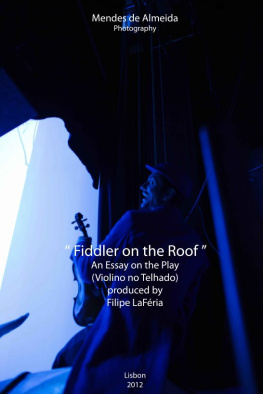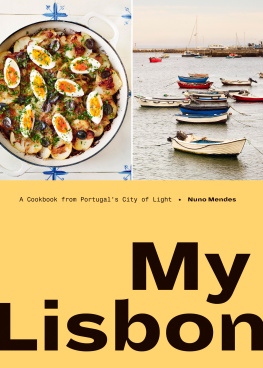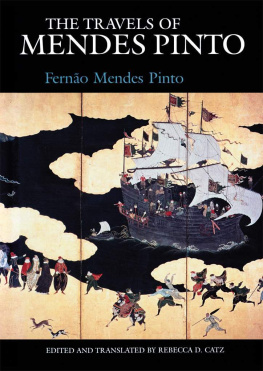MENDES NUNO - Lisboeta: Recipes from Portugal’s City of Light
Here you can read online MENDES NUNO - Lisboeta: Recipes from Portugal’s City of Light full text of the book (entire story) in english for free. Download pdf and epub, get meaning, cover and reviews about this ebook. year: 2017, publisher: Bloomsbury, genre: Home and family. Description of the work, (preface) as well as reviews are available. Best literature library LitArk.com created for fans of good reading and offers a wide selection of genres:
Romance novel
Science fiction
Adventure
Detective
Science
History
Home and family
Prose
Art
Politics
Computer
Non-fiction
Religion
Business
Children
Humor
Choose a favorite category and find really read worthwhile books. Enjoy immersion in the world of imagination, feel the emotions of the characters or learn something new for yourself, make an fascinating discovery.
- Book:Lisboeta: Recipes from Portugal’s City of Light
- Author:
- Publisher:Bloomsbury
- Genre:
- Year:2017
- Rating:3 / 5
- Favourites:Add to favourites
- Your mark:
- 60
- 1
- 2
- 3
- 4
- 5
Lisboeta: Recipes from Portugal’s City of Light: summary, description and annotation
We offer to read an annotation, description, summary or preface (depends on what the author of the book "Lisboeta: Recipes from Portugal’s City of Light" wrote himself). If you haven't found the necessary information about the book — write in the comments, we will try to find it.
Lisboeta: Recipes from Portugal’s City of Light — read online for free the complete book (whole text) full work
Below is the text of the book, divided by pages. System saving the place of the last page read, allows you to conveniently read the book "Lisboeta: Recipes from Portugal’s City of Light" online for free, without having to search again every time where you left off. Put a bookmark, and you can go to the page where you finished reading at any time.
Font size:
Interval:
Bookmark:



Contents

The City of Light
Lisbon. The city of light, where a luminous sun bounces its rays off the glittering River Tejo, dancing off shiny cobblestones, brightly painted tiles and yellow-walled buildings. This is where I was born, and although I packed my bags and set out to travel the world when I was 19 years old, Lisbon is still my hearts home.
Lisboa, to use the Portuguese name, is the oldest city in western Europe. From the riverbank the city climbs northwards to the ramparts and turrets of Castelo de So Jorge, a Moorish citadel that dates back to the medieval age. From here you can look down upon red pantiled roofs and cupolaed churches, across wide avenues and graceful squares, and out to the Ponte 25 de Abril, a vast metal suspension bridge that sweeps across the Tejo (Tagus in English) and out to the coast.
For many decades, Lisbon was a sleeping beauty, a low-key city that few but travel aficionados could pinpoint on a map. Once architecturally vibrant, many of the buildings fell into crumbling decline and graffiti gangs did their worst. The restaurant scene was good and solid but it had little to offer the discerning food-lover.
But boy how things have changed, at a speed thats truly incredible and, to me, really invigorating. In the last six or seven years, Lisbon has woken from her slumber, shaken herself down, put on her best dress and become one of the top cities for visitors in Europe. The city is now home to talented young chefs who have embraced their own food culture and opened fabulous little eateries. The traditional places have absorbed some of this youthful energy and upped their game, and companies offer gourmet tours that encompass acorn-fed ham, tasty fried snacks and locally made wine. Alongside this culinary revival, Lisbon is now a mecca for geeks and techies embracing the digital nomad lifestyle. Artists have come too, attracted by cheap workspaces and, of course, the amazing quality of the light. People are finally noticing what a fantastic place this city is.
These days, Lisbon is both hectic and calm, at once modern and old-fashioned. It is embracing the future with a delicious kind of optimism, while carefully preserving its rich past. Yes, the infestation of tuk-tuks racing around the streets is a pain, the roadworks and renovations seem never-ending, and the influx of visitors is putting a squeeze on housing for locals, but despite all of these hurtling developments Lisbon is, to my eyes, the best long-weekend destination there is not just on the continent, but probably in the world. There are wonderful galleries and museums, cool bars, amazing restaurants and chic cafs. The riverfront has been revived, allowing you to take a long stroll along the Tejo with stops here and there for a glass of wine or a ginjinha ( cherry liqueur) and a petisco (snack). Since its not very far from the sea, Lisbon is blessed with some of the best seafood anywhere in Europe, and offers the lovely possibility of hanging out by the beach even though youre staying in a city. And did I mention the balmy weather? Mild winters and hot summers mean that life in Lisbon can be lived largely outside.
A city of colour, Lisbon boasts hundreds of thousands of beautiful azulejos (ceramic tiles) adorning the walls. I love to see the city awash with the purple blossoms of the jacaranda trees that line the streets and pepper the parks. My favourite description of the city was penned in 1925 by the Portuguese poet Fernando Pessoa in his guidebook Lisboa: What the Tourist Should See: For the traveller who comes in from the sea, Lisbon, even from afar, rises like a fair vision in a dream, clear-cut against a bright blue sky which the sun gladdens with its gold. And the domes, the monuments, the old castles jut up above the mass of houses, like far-off heralds of this delightful seat, of this blessed region. Some silly modern architecture has got in the way of Pessoas vision, but much of the glory remains unchanged.
A labyrinth of narrow streets, alleyways and steep, seemingly never-ending steps and vertiginous inclines make up the centre of city. We call this part of town Old Lisbon, its historic quarter made up of bairros histricos (historic neighbourhoods) such as Alfama, Chiado, Bairro Alto, Castelo, Mouraria and the like. Legend has it that Lisbon sits on seven hills (our travel card, the equivalent of Londons Oyster card, is called the 7 Colinas), but whoever came up with that number clearly couldnt count and missed Graa, Lisbons highest hill, off the traditional list.
Yellow trams, especially built to navigate the tight gauge and twisting corners of Old Lisbons streets, were introduced here in the nineteenth century. These days youll be lucky to get a seat on the most famous tram, the number 28, which traverses the city and takes in many of its best sights. If youre a first-time visitor and can squeeze on, its a good way to get your bearings on your first day. Personally, I like to walk and find a little bakery I didnt know existed, a new caf perhaps, or a tiny shop selling freshly made sheeps milk cheese.
I adore my city in the morning, when it takes time to get itself going. I find theres a calming peace in wandering the empty streets after Ive had my first coffee of the day. Its then that I notice little details, such as how the black-and-white caladas (cobblestones), are sometimes laid in the form of a ship, or very often in the pattern of waves, floral designs or something altogether abstract. The word lisboeta (leezhboEHtuh) literally means a person from Lisbon, but it also sums up the lifestyle, the tradition and the emotion of belonging. You may have to be born in the city to truly be a lisboeta, but anyone can heartily embrace the sensibility.
The rhythm of the day revolves around mealtimes, and the recipes in this book are also divided into chapters that follow the culinary clock. The day begins with a coffee and a pastel (pastry) in the morning, followed a little later by some salgados (salty fried snacks). Then its on to almoo (lunch), before tucking into a few petiscos (small plates) in the late afternoon. Jantar (dinner), never really begins until 8 oclock and, because we have a sweet tooth, we like to end that meal with sobremesas (desserts). And lets not forget our penchant for greedy late-night sandes (sandwiches) in shellfish restaurants such as Ramiro, we even end the meal with a prego, a steak sandwich. The Portuguese love to eat and to share the experience with others; were happiest sitting round a table and eating with family, friends or new guests, passing around platters of goodness. If you find yourself invited into a locals home for a meal you should be in for a real treat.
My friend Jos Avillez has opened six restaurants during the relatively short period of electrifying culinary revolution. His radical approach has helped turn the city into a foodies delight and it has won him two Michelin stars at the most formal of his places, Belcanto. Andr Magalhes, another great friend, has created Taberna da Rua das Flores, a tiny little tavern serving some of the most inspired and creative cooking in the city theres always a queue outside the door. Other young guns have followed in the wake of these greats, taking Portuguese dishes to new heights. The tradition of sharing
Font size:
Interval:
Bookmark:
Similar books «Lisboeta: Recipes from Portugal’s City of Light»
Look at similar books to Lisboeta: Recipes from Portugal’s City of Light. We have selected literature similar in name and meaning in the hope of providing readers with more options to find new, interesting, not yet read works.
Discussion, reviews of the book Lisboeta: Recipes from Portugal’s City of Light and just readers' own opinions. Leave your comments, write what you think about the work, its meaning or the main characters. Specify what exactly you liked and what you didn't like, and why you think so.













